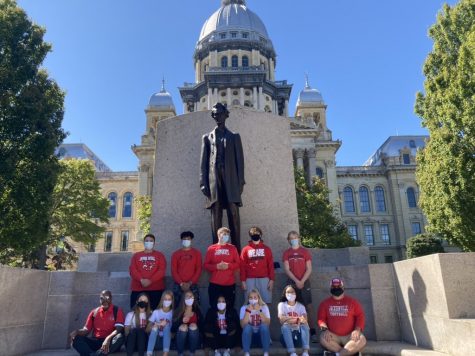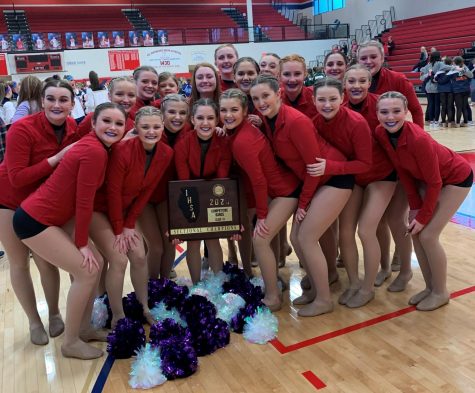New Harry Potter characters lack depth
December 7, 2018
Fans of the Harry Potter franchise flocked to theaters for the first movie in the Fantastic Beasts and Where to Find Them franchise. Over a year later and after heaps of controversy about the actions of creator J.K. Rowling, the second installment was met with both criticism and praise. Old characters in a new setting, surprising twists and turns, and mostly adorable beasts fill the sequel to the original quirky adventure, but does that make it any good?
To unpack Crimes of Grindelwald, viewers need at least some rudimentary knowledge of the original Harry Potter series. Nagini, Voldemort’s pet snake from the original series, makes an appearance as a… lady in the 1920s? J.K. Rowling revealed in early 2018 that Nagini is a maladactus, a human whose family is cursed to slowly turn into animals. Many fans were up in arms about this decision, claiming that it was a cheap move to introduce one of the franchise’s first woman of color in a main role and make her destined to be “evil’ by birth, a statement that echoes many racist beliefs of the past and on top of that make her the sidekick to a white supremacist allegory. Even if these complaints don’t get to the viewer, Nagini’s cheap plotline still might. Yes, the lady-turning-into-a-snake animations are pretty cool, but aside from that Nagini acts solely as a confidante and supporter to Credence, a troubled orphan and super powerful obscurus, whose survival of the last movie and arrival in Paris goes completely unexplained. Ultimately, Nagini’s inclusion in the film adds nothing to the viewing experience but special effects and disappointment from fans who weren’t already put off by Rowling’s problematic statements.
In fact, Crimes of Grindelwald seems to have a habit of squandering its female characters. Leta Lestrange, fiancee to Newt Scamander’s brother, seems throughout most of the movie to be simply a source of tension between Newt, who used to have feelings for her, and his brother. Although towards the end of the movie she is given some complexity, it is never developed enough to make her truly interesting to the viewer. This would be understandable, seeing as the franchise is due for three more films which could provide more character development, if only she didn’t sacrifice herself at the climax of the movie. The scene of her death would have been jarring if she was a character who was developed enough to be cared about, but Leta’s death seemed to many like a cheap way to get rid of the one semi-complex woman of color in the franchise.
Newt’s slow-burn love interest Tina Goldstein is given better treatment despite lack of development, but her sister Queenie fares much worse. A twist only works if it makes at least a little bit of sense, which is why Queenie deciding to follow Grindelwald feels wrong instead of just shocking. Sweet Queenie Goldstein would never get along with a group of people who literally kill children. The movie wants viewers to believe that Queenie was enticed by Grindelwald’s promise of a better world where she and her muggle boyfriend could be free to love each other. This could have been believable if Queenie hadn’t fought Grindelwald and seen up close what he and his followers do, not to mention his extreme hatred of muggles.
The leading man Newt Scamander, however, keeps up his caring and kind demeanor. His love for animals and softness of heart are treated as an asset rather than a character flaw as it would be in many other action movies. Jacob is similarly unconventional. Although his baking is essentially forgotten, his amiable nature is not. Dumbledore is also given a demeanor that deviates from the typical action hero, choosing cleverness over brute strength. Theseus, Newt’s brother, is given little characterization but is set up for more in the sequel.
The main attraction, however, is Grindelwald. The supervillain is given little depth, but this is made up for by his relevance and uniqueness. While Voldemort’s message of “no muggles” was always made clear, Grindelwald dances around the issues, choosing to talk vaguely about a brighter future and never quite explaining the place of muggles in it. His inclusion of WWII references and use of faulty causality shocked many moviegoers. Overall, it seems that Grindelwald will continue to be an intriguing villain, especially given his past relationship with Dumbledore.
Crimes of Grindelwald was met with a lukewarm reception for a multitude of good reasons. For true Harry Potter fans, though, almost nothing will keep them from seeing the next installment.






